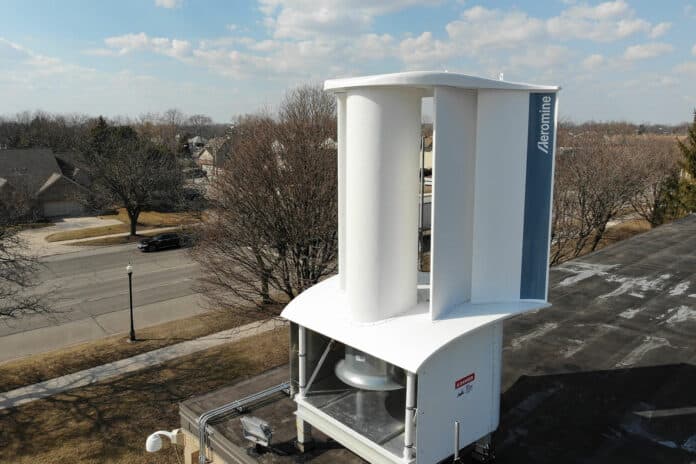Typical wind turbines are massive, noisy, and visually intrusive. They rely on rotating rotor blades, are prone to maintenance issues, and can harm or kill birds.
Now, Texas-based Aeromine Technologies has designed a new bladeless wind energy solution that can be integrated with existing solar energy systems and building electrical systems. The new 10-by-10 foot turbine is relatively tiny, and without moving blades, it isn’t immediately recognizable as wind energy tech.
This innovative, motionless wind harvesting system easily installs on the edge of a building generating up to 50% more energy at the same cost as rooftop solar PV. The company says that the new bladeless wind energy solution is helping commercial property owners meet increasing demands for onsite renewable energy.
Aeromine’s motionless technology leverages aerodynamics similar to airfoils on a race car to capture and amplify each building’s airflow. Requiring just 10% of the roof space needed by solar panels, the stationary, silent, and durable Aeromine unit generate around-the-clock energy in any weather.
The systems consist of 20-40 units installed on the edge of a building facing the predominant wind direction. The combination of Aeromine’s wind solution and rooftop solar, designed to work seamlessly with a building’s existing electrical system, can generate up to 100% of a building’s onsite energy needs while minimizing the need for energy storage. Aeromine performs under the most extreme weather conditions and produces power when energy demand is greatest.
“This is a game-changer adding new value to the fast-growing rooftop power generation market, helping corporations meet their resilience and sustainability goals with an untapped distributed renewable energy source,” said Aeromine CEO David Asarnow, a veteran of the climate technology industry. “Aeromine’s proprietary technology brings the performance of wind energy to the onsite generation market, mitigating legacy constraints posed by spinning wind turbines and less efficient solar panels.”
The Aeromine system can utilize a small footprint on a building’s roof, leaving ample space for existing solar and utility infrastructure. It provides commercial property owners facing increased energy costs and rising demand for features such as electric vehicle charging stations with an effective new tool in their drive toward energy independence.
